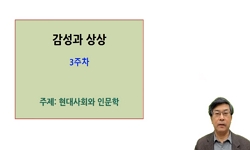본 논문은 제주도 구전신화에서 파악되는 '여성 감성ㆍ감수성'과 그것이 여성의 신체적 표현과는 어떠한 상관관계를 갖고 있는가, 그리고 그것의 신화적 의미는 무엇인가를 '분노'의 감정에...
http://chineseinput.net/에서 pinyin(병음)방식으로 중국어를 변환할 수 있습니다.
변환된 중국어를 복사하여 사용하시면 됩니다.
- 中文 을 입력하시려면 zhongwen을 입력하시고 space를누르시면됩니다.
- 北京 을 입력하시려면 beijing을 입력하시고 space를 누르시면 됩니다.
 OpenAccess
OpenAccess
제주도 구전신화에서의 여성의 ‘감성ㆍ감수성’과 신체적 표현 = Women's SensitivityㆍSusceptibility and Physical Expressions in Jeju-do Oral Myths -Focusing on the mythological meaning of anger emotion-
한글로보기https://www.riss.kr/link?id=A101737293
- 저자
- 발행기관
- 학술지명
- 권호사항
-
발행연도
2015
-
작성언어
-
-
주제어
분노 ; 감성 ; 감수성 ; 구전신화 ; 제주도 ; 여신 ; Jeju-do ; Oral Myths ; Sensitivity ; Susceptibility ; Anger Emotion
-
KDC
810
-
등재정보
KCI등재
-
자료형태
학술저널
- 발행기관 URL
-
수록면
115-143(29쪽)
-
KCI 피인용횟수
0
- DOI식별코드
- 제공처
-
0
상세조회 -
0
다운로드
부가정보
국문 초록 (Abstract)
본 논문은 제주도 구전신화에서 파악되는 '여성 감성ㆍ감수성'과 그것이 여성의 신체적 표현과는 어떠한 상관관계를 갖고 있는가, 그리고 그것의 신화적 의미는 무엇인가를 '분노'의 감정에 초점을 맞춰 분석한 것이다. 논의 내용을 정리하면 다음과 같다. 첫째, 제주도 구전신화에서의 '여성 감성ㆍ감수성'과 그에 따른 신체적 표현은 창세신화에서의 여신(女神)의 창조 행위의 변형에 해당된다. 둘째, 제주도 구전신화에서 여신ㆍ여성의 '분노'는 단순한 감정으로서 제시되고 있기보다는 창세신화에서의 여신의 '창조적 힘'이 변용되어 나타나고 있는 것에 해당한다. 셋째, 부모와의 수직적 관계 속에서 파악되는 여성ㆍ여신 감정과 신체적 표현의 층위, 그 외 타자적 존재들과의 수평적 관계 속에서 파악되는 여성ㆍ여신 감정과 신체적 표현의 층위를 함께 연결시켜서 이해하기보다는 상호 다른 층위에서 이해할 필요성이 있다. 왜냐 하면 전자의 층위에서는 여성ㆍ여신의 감정이 드러나지 않는 반면, 후자의 층위에서는 '분노'의 감정으로 적극적으로 표출되고 있기 때문이다. 그럼에도 두 층위는 상호 대립되기보다는 조화를 이뤄 한 편의 신화를 계기적으로 구성하고 있는 것처럼 보이는데, 그것은 타자를 향한 여성ㆍ여신의 '분노' 감정이 두 층위를 상호 완충시키는 기능을 하고 있는 데에 기인한다.
다국어 초록 (Multilingual Abstract)
This study purposed to examine women's sensitivityㆍsusceptibility observed in Jeju-do oral myths, its correlation with women's physical expressions, and its mythological meaning, focusing on anger emotion. The contents of discussion are summarized a...
This study purposed to examine women's sensitivityㆍsusceptibility observed in Jeju-do oral myths, its correlation with women's physical expressions, and its mythological meaning, focusing on anger emotion. The contents of discussion are summarized as follows. First, women's sensitivityㆍsusceptibility and its physical expressions in Jeju-do oral myths are the transformation of goddesses'(女神) creation act. Second, goddesses'ㆍwomen's anger in Jeju-do oral myths is presented as the acculturation of the 'creative power' of the goddesses in the creation myths, rather than as a simple emotion. Third, in our understanding, we need to separate the layer of women'sㆍgoddesses' emotion and their physical expressions presented in their vertical relation with the parents from the layer of women'sㆍgoddesses' emotion and their physical expressions presented in their horizontal relation with others, rather than associating them together. It is because women'sㆍgoddesses' emotion is not exposed clearly in the former layer, but anger emotion is expressed actively in the latter layer. Nevertheless, the two layers appear to be harmonious with each other and construct a myth together rather confronting with each other, and this is because women'sㆍgoddesses' anger emotion toward others plays the role of buffering between the two layers.
목차 (Table of Contents)
- <국문초록>
- 1. 구전신화 속 ‘여성의 몸’을 바라보는 관점
- 2. 여성의 ‘감성ㆍ감수성’과 신체적 표현의 상관관계
- 3. ‘여성 감성ㆍ감수성’의 신체적 표현과 창세신화적 기원
- 4. 결론을 대신하여: '여성 감성ㆍ감수성'의 신체적 표현이 갖는 중층적 의미
- <국문초록>
- 1. 구전신화 속 ‘여성의 몸’을 바라보는 관점
- 2. 여성의 ‘감성ㆍ감수성’과 신체적 표현의 상관관계
- 3. ‘여성 감성ㆍ감수성’의 신체적 표현과 창세신화적 기원
- 4. 결론을 대신하여: '여성 감성ㆍ감수성'의 신체적 표현이 갖는 중층적 의미
- 참고문헌
- Abstract
참고문헌 (Reference)
1 장주근, "한국의 신화" 성문각 5-8, 1961
2 최원오, "제주도와 오키나와 창세신화의 중심서사와 주변서사" 한국비교문학회 (59) : 115-139, 2013
3 현용준, "제주도무가" 고려대학교 민족문화연구소 25-353, 1996
4 김신정, "무속신화와 여성의 몸" 한국여성문학학회 (27) : 33-56, 2012
5 富育光, "薩滿敎與神話" 遼寧大學出版社 222-247, 1990
6 Leeming, David Adams, "Encyclopedia of Creation Myths" ABC-CLIO 1994
7 Leeming, David A., "Creation Myths of the World: An Encyclopedia Vol.1, Vol. 2" ABC-CLIO 2010
1 장주근, "한국의 신화" 성문각 5-8, 1961
2 최원오, "제주도와 오키나와 창세신화의 중심서사와 주변서사" 한국비교문학회 (59) : 115-139, 2013
3 현용준, "제주도무가" 고려대학교 민족문화연구소 25-353, 1996
4 김신정, "무속신화와 여성의 몸" 한국여성문학학회 (27) : 33-56, 2012
5 富育光, "薩滿敎與神話" 遼寧大學出版社 222-247, 1990
6 Leeming, David Adams, "Encyclopedia of Creation Myths" ABC-CLIO 1994
7 Leeming, David A., "Creation Myths of the World: An Encyclopedia Vol.1, Vol. 2" ABC-CLIO 2010
동일학술지(권/호) 다른 논문
-
- 한국고전여성문학회
- 서동진(Seo Dong Jin)
- 2015
- KCI등재
-
- 한국고전여성문학회
- Li Chun ji(李春姬)
- 2015
- KCI등재
-
- 한국고전여성문학회
- 최기숙(Choe Key sook)
- 2015
- KCI등재
-
- 한국고전여성문학회
- 소영현(So Young hyun)
- 2015
- KCI등재
분석정보
인용정보 인용지수 설명보기
학술지 이력
| 연월일 | 이력구분 | 이력상세 | 등재구분 |
|---|---|---|---|
| 2026 | 평가예정 | 재인증평가 신청대상 (재인증) | |
| 2020-01-01 | 평가 | 등재학술지 유지 (재인증) |  |
| 2017-01-01 | 평가 | 등재학술지 유지 (계속평가) |  |
| 2016-02-15 | 학술지명변경 | 외국어명 : 미등록 -> Korean Classical Woman Literature Studies |  |
| 2013-01-01 | 평가 | 등재학술지 유지 (등재유지) |  |
| 2010-01-01 | 평가 | 등재학술지 유지 (등재유지) |  |
| 2007-01-01 | 평가 | 등재학술지 선정 (등재후보2차) |  |
| 2006-01-01 | 평가 | 등재후보 1차 PASS (등재후보1차) |  |
| 2004-01-01 | 평가 | 등재후보학술지 선정 (신규평가) |  |
학술지 인용정보
| 기준연도 | WOS-KCI 통합IF(2년) | KCIF(2년) | KCIF(3년) |
|---|---|---|---|
| 2016 | 0.92 | 0.92 | 0.97 |
| KCIF(4년) | KCIF(5년) | 중심성지수(3년) | 즉시성지수 |
| 1.04 | 0.99 | 2.523 | 0.27 |




 KCI
KCI 스콜라
스콜라






